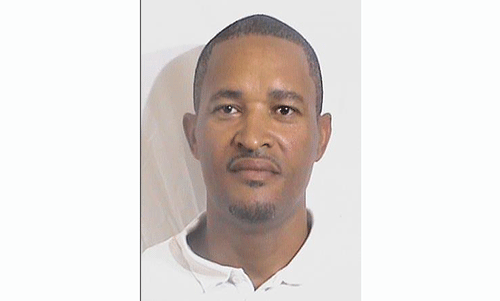Benedick M Louw
It has been now more than seven years since the public debate around the removal of a statue, a debate brought to our fore more recently by former SWANU president Usutuaije Maamberua in 2015 when he made demand that the statue of Curt von François in front of the head office of the City of Windhoek be removed. This he said during one of the few progressive parliamentary sittings we experienced in a ‘post-independent’ Namibia.
“The statue of the mustachioed Von François in German military uniform is an abomination that should be removed because it is celebrating colonial atrocities against Namibians,” Maamberua exclaimed.
On the other hand, it defeats logic, although not surprising for many Namibians as demonstrated on social media circles and corridors of power of the anti-removal stance exhibited by some sections of the Namibian-German community, constituted of prominent retired lawyers of German descent, businesses and kith and kin of Von François despite the overwhelming calls to tear it down.
Similar sentiments of Maamberua were echoed in March 2014 by former president Hifikepunye Pohamba upon paying tribute to the Ovaherero, Ovambanderu and Nama communities who were either exterminated or driven into exile by the infamous extermination order issued by general Lothar von Trotha of imperial Germany saying “some people in the German community say the government betrayed its insensitivity by removing the Reiterdenkmal (horse rider statue) not too long ago without any consultations.”
He goes on.
“No, it’s them that are insensitive. They want us to keep the horse, while they removed the Berlin Wall” and “that if the Germans want the Reiterdenkmal, they can ship it back to Germany.”
However, it was the //Kharas Swapo Party Youth League of 2010-2017, led by this author as its regional information, mobilisation and publicity secretary, that unequivocally called for and adopted a resolution for the necessary removal of this symbol of colonial-era nostalgia - during an ordinary regional executive committee (REC) meeting in Keetmanshoop.
The resolution for the removal of the Reiterdenkmal - a statue inaugurated in January 1912 to honour soldiers and civilians who died on the German side of the Herero and Namaqua War of 1904 to 1907 - was followed after robust discussions and deliberations by the southern SPYL REC of the time.
It was resolved that the colonial thinking at the time when the statue was erected, which turned into open and malevolent racism and excessive nationalism continues to permeate Namibian society today because such constructs remain intact as demonstrated in the material conditions of the native.
These symbols of German military supremacy and conquest continue to manifest in the suffering and exploitation of black Namibians in particular.
Landlessness, poverty, hunger, unemployment, underemployment are all structural inequalities which are omnipresent with black faces on them., compared to a minority colonial settler population which continues to own and control the economic heights of the economy, including more than 70% of agricultural viable land shared with predominantly white male Afrikaners.
These statues not only mark history and honour heritage as professed by colonial apologists and denialists of colonial atrocities but remain representatives of racist symbols of oppression, colonialism and exploitation.
In the final analysis, it was the Affirmative Repositioning (AR) movement, led by its two representatives in the City of Windhoek council, namely activist-in-chief Job Shipululo Amupanda and activist Illse Keister Elago as mandated by AR directive and outlined in its revolutionary programme, the city passed a motion entitled the Windhoek Radical Transformation (WRT) programme to remove the colonial statue of Curt von François, which brought its physical downfall.
This fallist movement is not peculiar to Namibia but part of a global tide to cleanse our environment and architectural space of symbols which symbolise or insinuate the oppression of one group of people over another such as statues, streets and building names, and so forth. From #TheRhodesMustFall campaigns from South Africa to Oxford in the UK, students and society alike have been calling for the fall of John Cecil Rhodes.
Von Francois, contrary to the belief of the anti-removal brigade was no saint. He slaughtered ethnic Namibians by the thousands in colonial conquest and helped lay the foundations of apartheid in Namibia, then South West-Africa.
The 23rd of November 2022 marked 129 years since 225 German soldiers attacked Nama chief, Kaptein Hendrik Witbooi’s headquarters at Hoornkrans on 12 April 1893 under the command of Curt von François killing 80 people, mostly women and children.
Reason?
German colonial authorities worried about the independence of the Witboois and their rejection of German ‘protection’ were concerned by Witbooi and Samuel Maharero entering into negotiations for peace in 1892, which posed a threat to Germany’s control of the territory.
This led Witbooi’s guerrilla campaign against the Germans, which kept Von François’ forces at bay for seven months particularly by focusing efforts on Von François’ garrison. Following several unsuccessful offensives against Witbooi, the Reichstag in Germany removed Von François.
In 1894, he was dismissed for his inability to deal with Witbooi despite their military capability and replaced by major Theodor Leutwein, who later on favoured a negotiated settlement after being outnumbered. Von François left German South West Africa in 1895. He died near Berlin in 1931 at the age of 79 without having paid for his crimes against humanity.
As revolutionary activists, it is our moral duty to debunk myths which seek to distort absolute truths, and in the words of the great agricultural engineer and revolutionary from Guinea Bissau and Cabo Verde, Amilcar Lopez Da Costa Cabral, we must endeavour to “hide nothing from the masses of our people. Expose lies whenever they are told. Mask no difficulties, mistakes or failures. Claim no easy victories.”
* Benedick M Louw is Affirmative Repositioning head of land affairs. You can follow him on Twitter @benedick_m_louw


